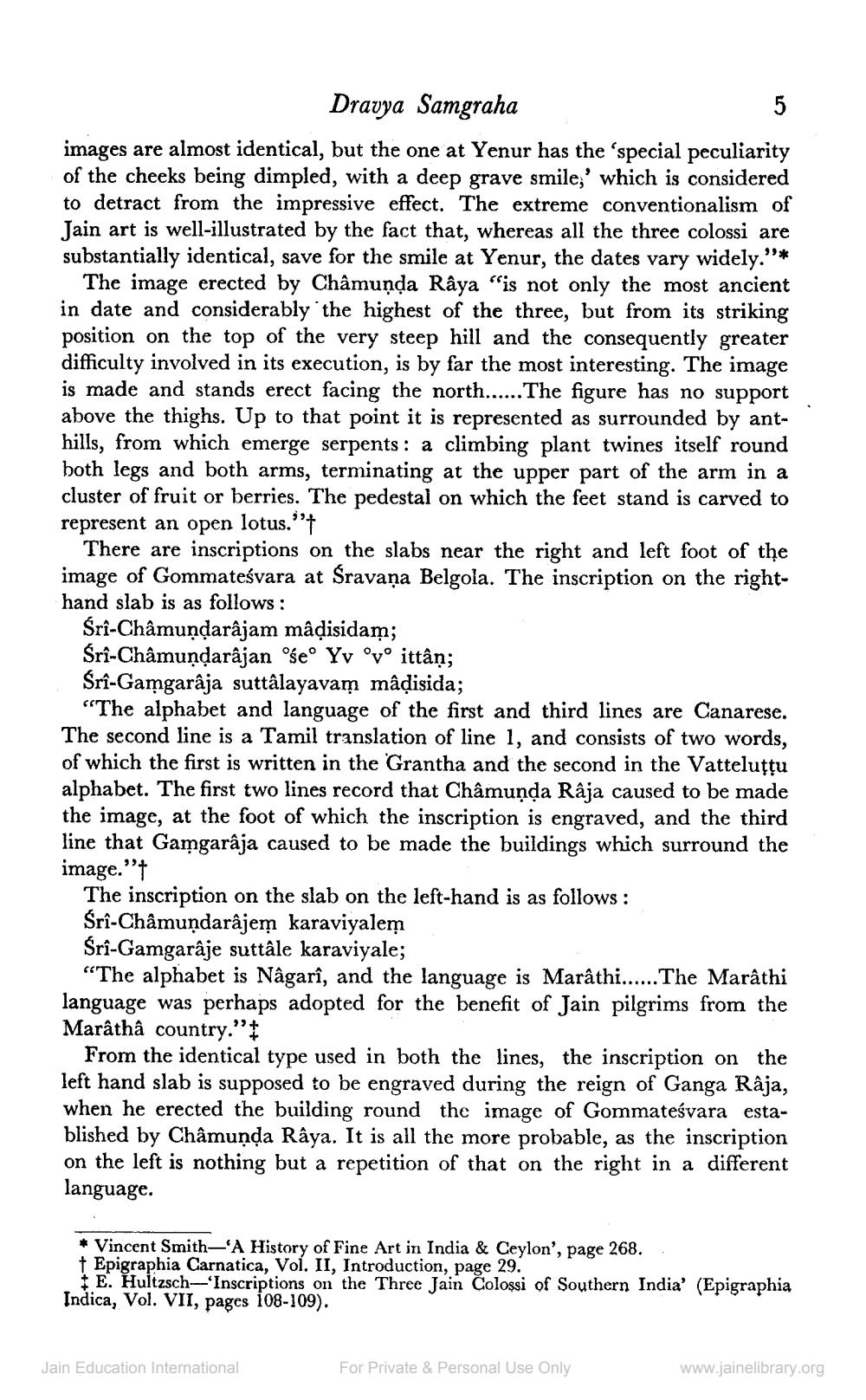________________
Dravya Samgraha images are almost identical, but the one at Yenur has the 'special peculiarity of the cheeks being dimpled, with a deep grave smile,' which is considered to detract from the impressive effect. The extreme conventionalism of Jain art is well-illustrated by the fact that, whereas all the three colossi are substantially identical, save for the smile at Yenur, the dates vary widely.''*
The image erected by Châmunda Râya "is not only the most ancient in date and considerably the highest of the three, but from its striking position on the top of the very steep hill and the consequently greater difficulty involved in its execution, is by far the most interesting. The image is made and stands erect facing the north...... The figure has no support above the thighs. Up to that point it is represented as surrounded by anthills, from which emerge serpents: a climbing plant twines itself round both legs and both arms, terminating at the upper part of the arm in a cluster of fruit or berries. The pedestal on which the feet stand is carved to represent an open lotus."'+
There are inscriptions on the slabs near the right and left foot of the image of Gommateśvara at Sravana Belgola. The inscription on the righthand slab is as follows:
Srî-Châmundarâjam mâạisidam; Śrî-Châmundarâjan seo Yv °v° ittân; Srî-Gamgarâja suttâlayavam mâdisida; "The alphabet and language of the first and third lines are Canarese. The second line is a Tamil translation of line 1, and consists of two words, of which the first is written in the Grantha and the second in the Vatteluţtu alphabet. The first two lines record that Châmunda Râja caused to be made the image, at the foot of which the inscription is engraved, and the third line that Gamgarâja caused to be made the buildings which surround the image.”+
The inscription on the slab on the left-hand is as follows: Śrî-Châmundarâjem karaviyalem Śrî-Gamgarâje suttâle karaviyale;
“The alphabet is Nâgarî, and the language is Marâthi..... The Marâthi language was perhaps adopted for the benefit of Jain pilgrims from the Marâthâ country.”
From the identical type used in both the lines, the inscription on the left hand slab is supposed to be engraved during the reign of Ganga Râja, when he erected the building round the image of Gommateśvara established by Châmunda Râya. It is all the more probable, as the inscription on the left is nothing but a repetition of that on the right in a different language.
* Vincent Smith, A History of Fine Art in India & Ceylon', page 268. | Epigraphia Carnatica, Vol. II, Introduction, page 29. IE. Huitzsch—'Inscriptions on the Three Jain Colossi of Southern India' (Epigraphia Indica, Vol. VII, pages 108-109).
Jain Education International
For Private & Personal Use Only
www.jainelibrary.org




